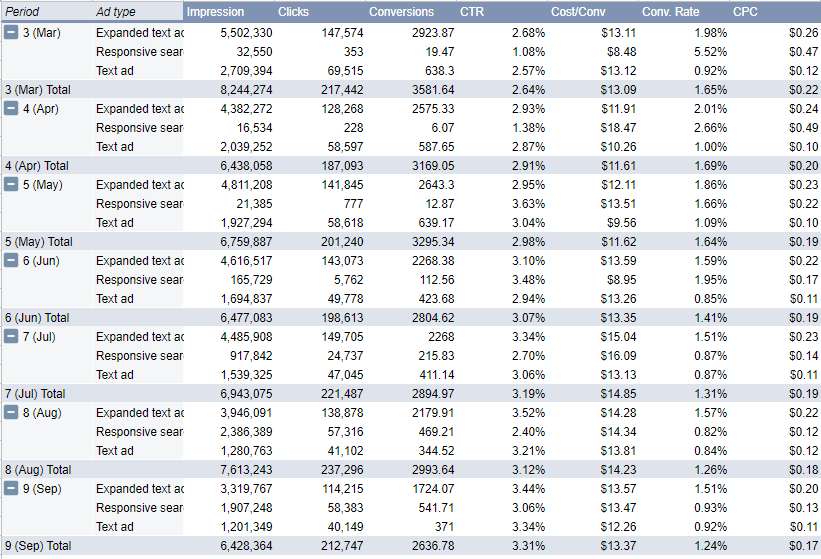Currently still in beta, Responsive Search Ads (RSAs) were launched in early 2018 and they are the newest and most flexible search ad format currently on Google Ads which Google claims to be a real game-changer. Contrary to the expanded text ads where you can have only 3 headlines and 2 descriptions, now you can create up to 15 different headlines with 4 different descriptions which can add up to 43,680 different permutations/variations in a single ad.
What makes RSA unique, as compared to other text ad types?
Simply to say, Google Ads will automatically test the different permutations of the input ad headlines and descriptions to find out which of the ad copy combination will perform best. This is like performing a MVT testing on your ad copies. Gradually, Google Ads will learn and show the best ad message to your targeted audience and drive better results.
Evaluating the effectiveness of Responsive Search Ads
One of our clients has many legacy campaigns that were using the old text ad and expanded test ad copies. So this was a great opportunity to test out and evaluate the overall effectiveness of the RSAs against the legacy text ad types
Our hypothesis was as follows:
- CTR will improve, and driving clicks at a lower cost (CPC)
- In the long run, it will drive conversions at a lower CPA with a lower CPC
What we have done while facing some challenges?
There was a substantial number of campaigns, so we decided to launch the RSAs with revised ad copies by batches on a weekly basis. On top of them, as many of the campaigns are running on machine learning, we could not just pause the old ads and let the RSAs do the job. Doing so might negatively impact on the existing results we were getting back then, and it will take time for the machine learning to pick up the new ad copy change.
What were the results?

- Media spend starts to shift to the new RSAs, giving them more impressions and clicks when the new ad type was launched in June 2019 with the last batch by end of August 2019.
- We noticed that RSAs were getting significantly lower CPC and Conversion Rate, despite a lower CTR compared to expanded text ads. This is highly likely is due to the testing out of new ad copy permutations for the RSAs, as we adopted new ad copies in this case. Moreover, most of the media spend is still going to the expanded text ads.
Conclusion
We should adopt the same level playing field for both the old ad types & RSAs. That means the RSAs should use the same headline & description copies from the expanded text ads, instead of having new different copies.
The number of permutations should also be capped to hasten the learning as finding the best out of the 43,680 different permutations would definitely take a very long time (~1 year).

